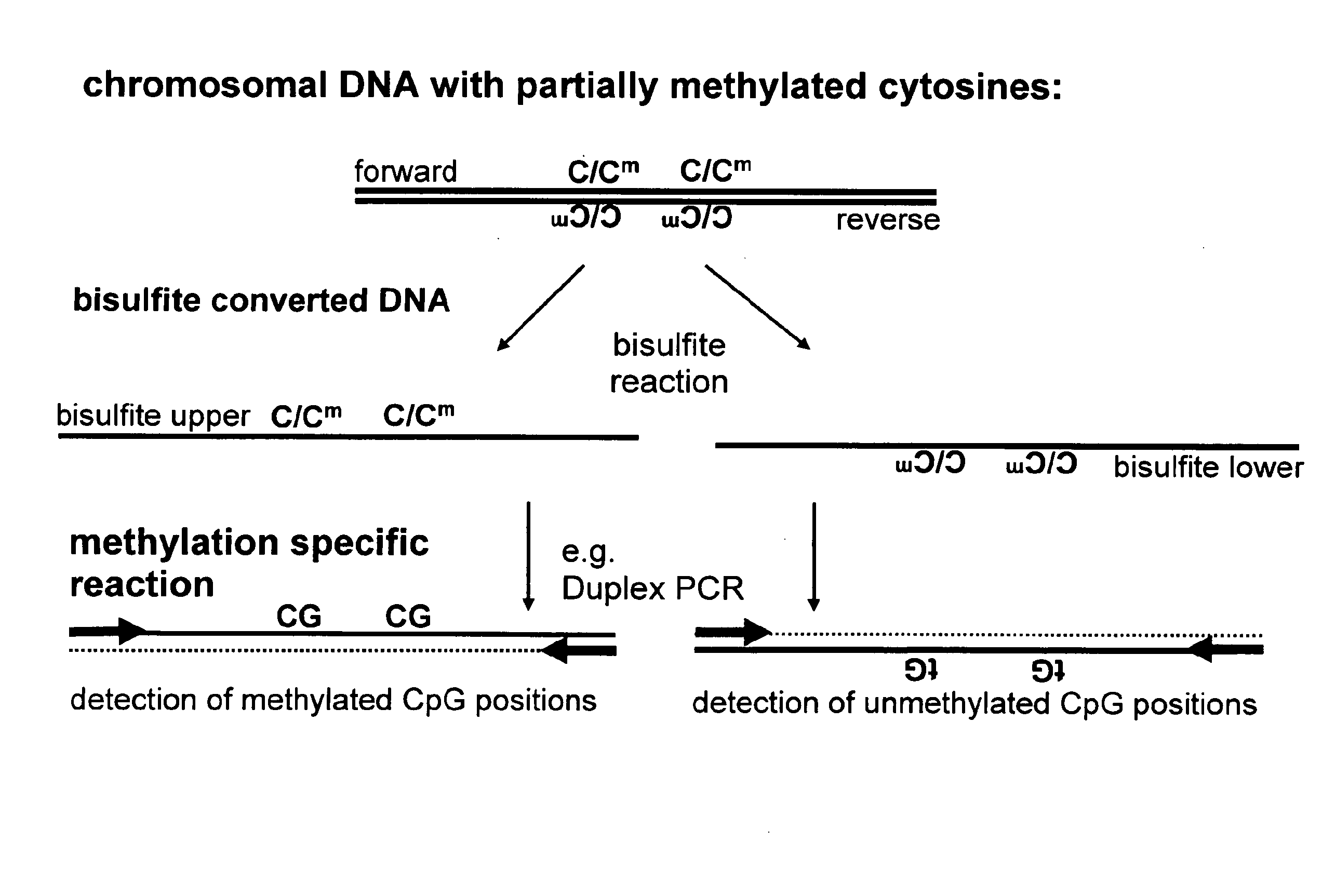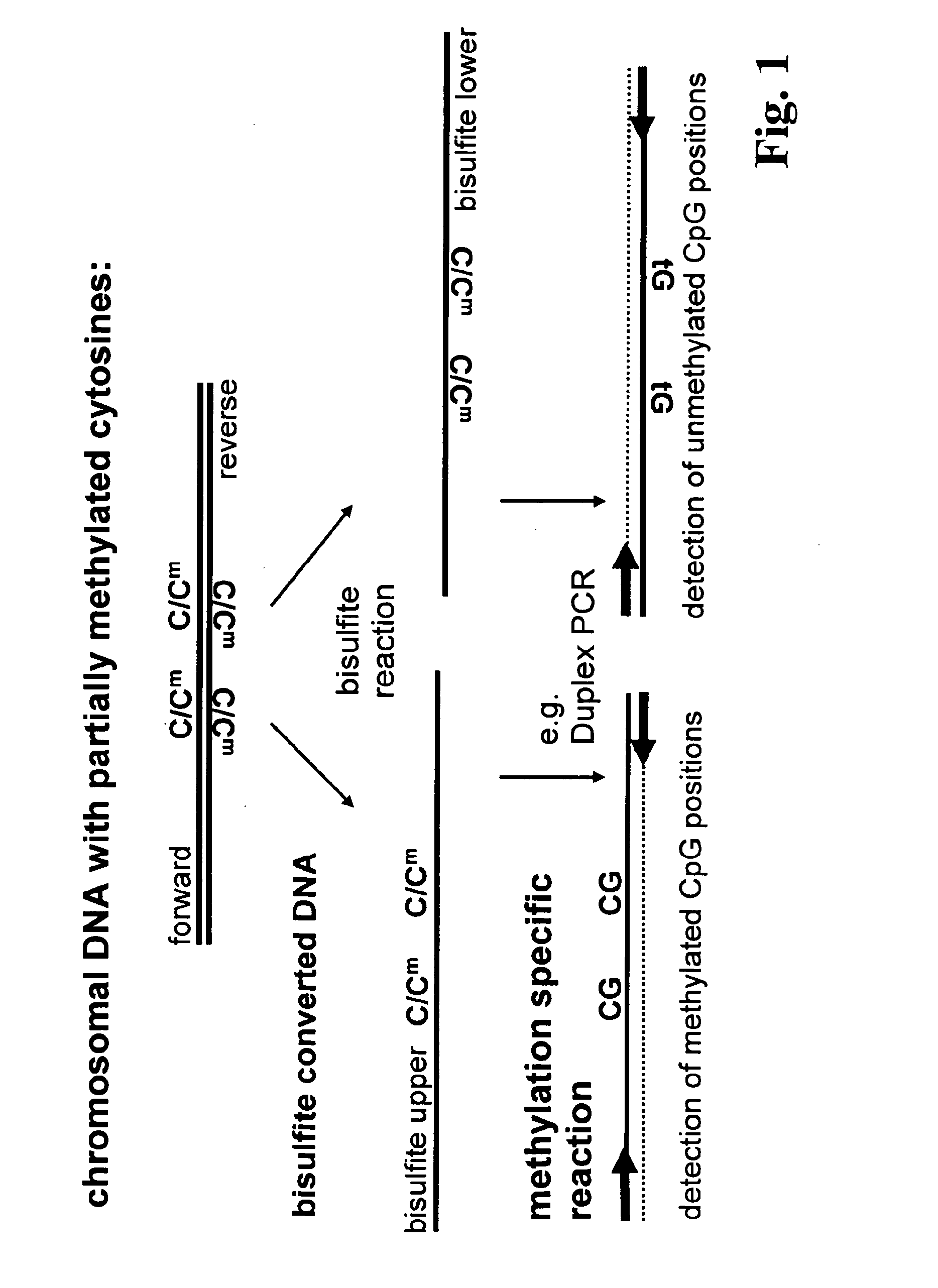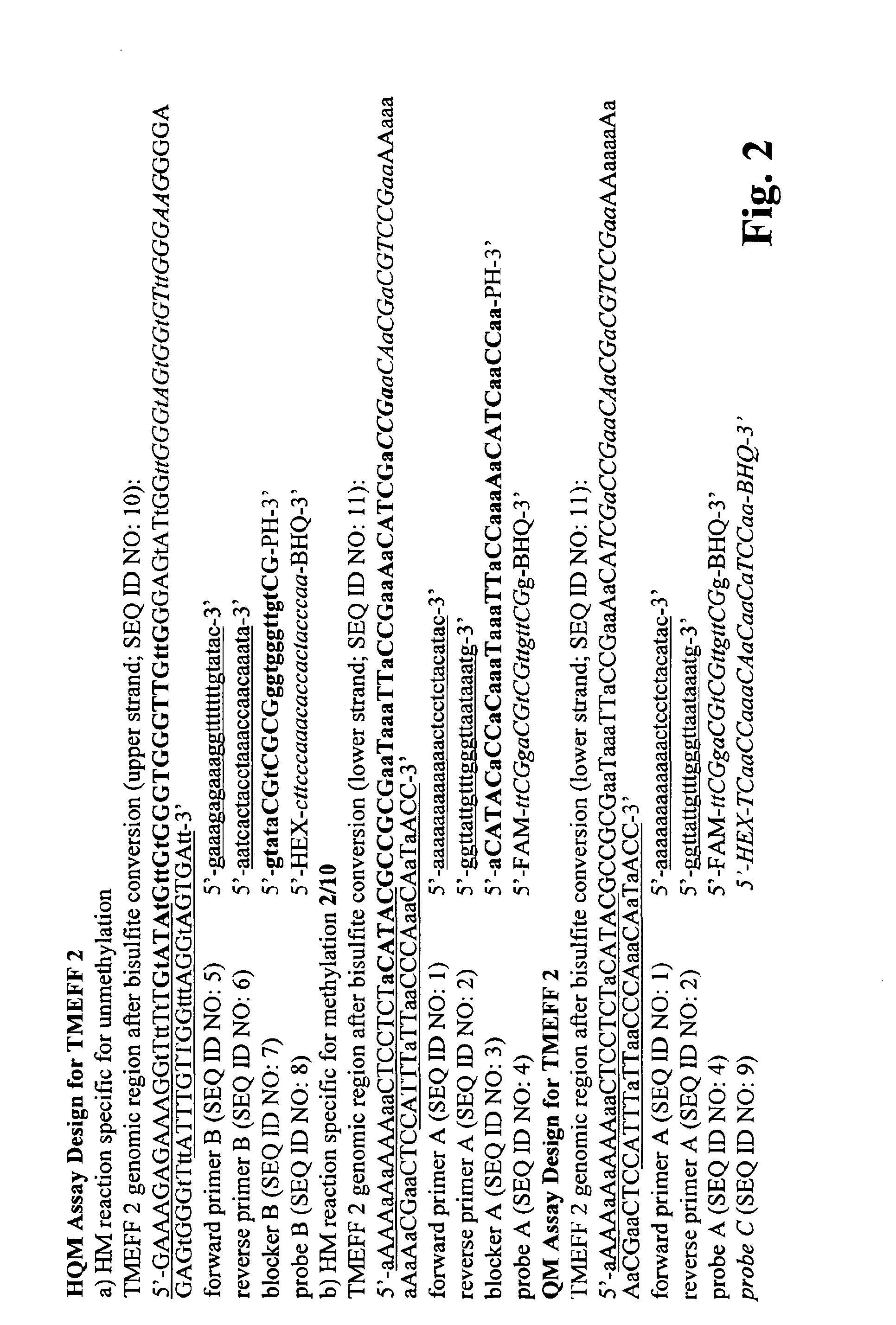Method for methylation analysis of nucleic acid
a methylation analysis and nucleic acid technology, applied in the field of sensitive methylation analysis of nucleic acid, can solve the problems of inapplicability of conventional dna analysis methods based on hybridization, difficult to identify methylation, difficult to detect 5-methylcytosine using particular standard methods, etc., and achieve enhanced sensitivity, rapid quantitation of methylation differences, and enhanced sensitivity
- Summary
- Abstract
- Description
- Claims
- Application Information
AI Technical Summary
Benefits of technology
Problems solved by technology
Method used
Image
Examples
example 1
Comparison of the HQM Method with the QM Method
[0159]QM method: The QM method has a relative good quantitative performance due to an internal calibration. Thereby the method uses the ratio of the signal of the probe specific for methylated DNA to the signal of the probe specific for unmethylated DNA. The disadvantage of the QM method is that it has a limited sensitivity. This is based therein i) that the amplification is methylation unspecific; ii) that the signal specific for methylated DNA decreases with the presence of a large increasing portion of unmethylated DNA; and iii) that the signal specific for unmethylated DNA decreases with the presence of a large increasing portion of methylated DNA. Therefore the method has poor error associated resolution when analysing a sample with less than 10% methylated DNA (90% unmethylation) or when analyzing a sample with higher than 90% methylated DNA (10% unmethylation). Values smaller than 1% methylation (99% unmethylation) or larger than...
PUM
| Property | Measurement | Unit |
|---|---|---|
| Fraction | aaaaa | aaaaa |
| Fraction | aaaaa | aaaaa |
| Fraction | aaaaa | aaaaa |
Abstract
Description
Claims
Application Information
 Login to View More
Login to View More - R&D
- Intellectual Property
- Life Sciences
- Materials
- Tech Scout
- Unparalleled Data Quality
- Higher Quality Content
- 60% Fewer Hallucinations
Browse by: Latest US Patents, China's latest patents, Technical Efficacy Thesaurus, Application Domain, Technology Topic, Popular Technical Reports.
© 2025 PatSnap. All rights reserved.Legal|Privacy policy|Modern Slavery Act Transparency Statement|Sitemap|About US| Contact US: help@patsnap.com



